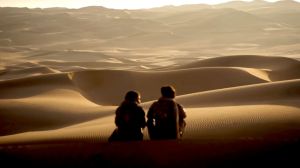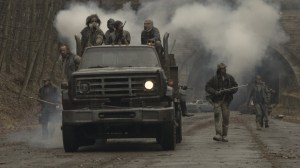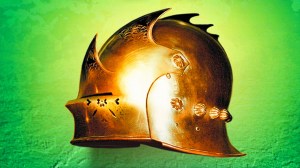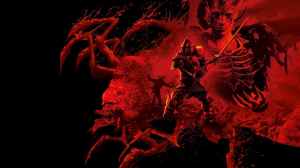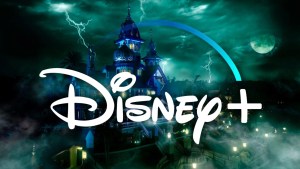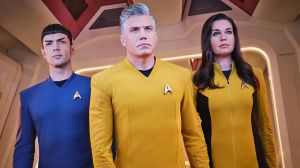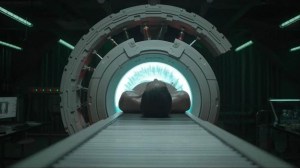When people talk about sci-fi, they usually think of spaceships, aliens, and explosions. But the most memorable films in the genre aren’t just about that; they’re all about making the audience feel the world they’re in. Every choice of color, lighting, production design, or set matters because it shapes what you see and how you connect with the story. Some directors have taken this further than others, building worlds so consistent and visually striking that even years later, they still feel otherworldly. It’s easy to hear how massive these productions are visually, and many became iconic largely because of that. And it’s not just a flashy display of CGI or special effects — everything is carefully crafted to help tell a story beyond the script, directing, and performances.
Videos by ComicBook.com
On this list, we’re looking at the 7 sci-fi movies that stand out the most for exactly that: visuals that grab your attention from start to finish. Each one proves that creating a stunning work of art means blending aesthetics and storytelling seamlessly.
7) Star Wars: The Last Jedi

Star Wars is one of the most beloved franchises among sci-fi fans, but not everyone is a fan of the Disney trilogy. One thing’s for sure, though: when it comes to visuals, Star Wars: The Last Jedi is impressive and eye-catching. In the story, Rey (Daisy Ridley) tries to convince Luke (Mark Hamill) to return to Jedi training while the Resistance flees from the First Order. To help tell that story, the film builds a really interesting visual world, with vibrant colors and top-notch CGI. Scenes like the planet Crait, with its white salt streaked with red, are iconic and make the moment’s confrontation even more impactful. There are also some space sequences that work visually, especially Holdo’s (Laura Dern) Maneuver, which perfectly combines movement and contrast against the emptiness of space.
However, the movie’s beauty really shines in isolated moments rather than consistently throughout. Sure, there are stunning shots, but Rian Johnson didn’t quite manage to maintain enough visual consistency to push the film higher on this ranking. Some areas feel generic, others even feel over the top. The Last Jedi isn’t ugly by any means, but it doesn’t sustain its aesthetic across the entire movie the way some other productions on this list do.
6) Interstellar
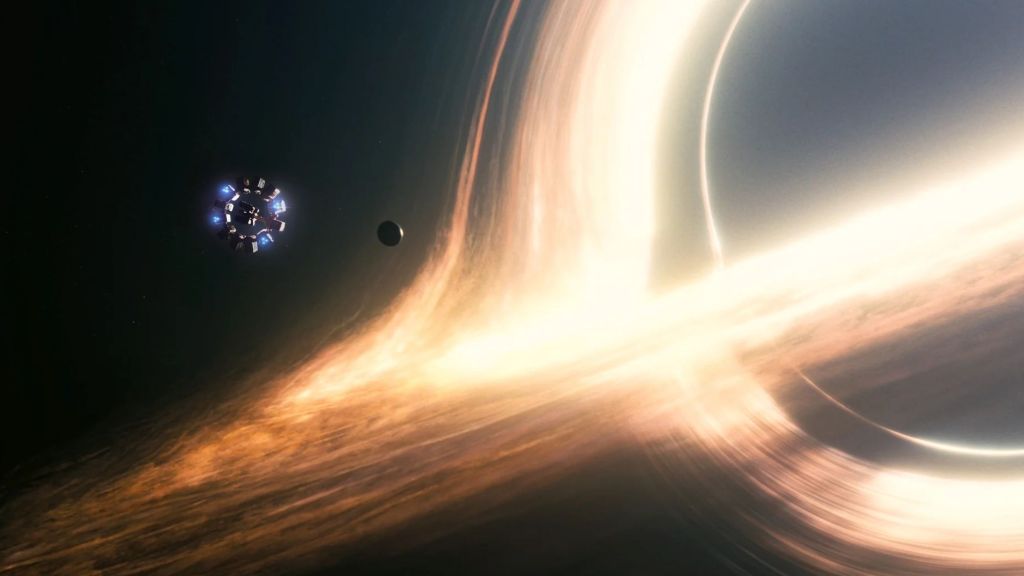
You know those films that go all-in on visual beauty but know exactly how to avoid over-the-top colors? That’s Interstellar. The movie follows astronaut Cooper (Matthew McConaughey) and his team as they try to find a new home for humanity, traveling through unknown planets and strange dimensions. And while the story has its quirks and challenges the audience a bit, what really stands out is how Christopher Nolan turns science into spectacle: the black hole Gargantua is so impressive you can almost feel its gravity. But the film isn’t just about effects, since the cinematography balances action, space, and emotion, showcasing both the vastness of the cosmos and human vulnerability.
In Interstellar, every single frame has a purpose: space isn’t just a backdrop, it’s part of the story. Everything feels carefully crafted to hit visually and emotionally, making it a masterclass in attention to detail. On the other hand, compared to some other films, it falls a bit short on consistency in production design and overall aesthetic. There are movies that are instantly iconic just for the totality of their visuals, and this one doesn’t quite reach that level.
5) Mad Max: Fury Road
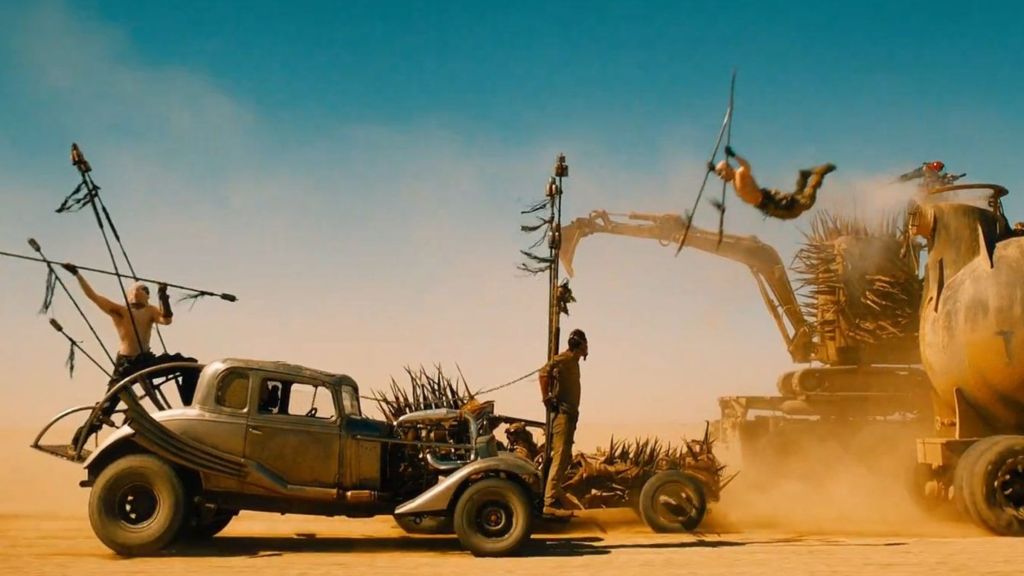
This is all about aesthetics, and Mad Max: Fury Road comes in like a wrecking ball. If you want a visually striking movie, this one is a benchmark. In the fourth installment of the franchise, Furiosa (Charlize Theron) and Max (Tom Hardy) try to escape Immortan Joe (Hugh Keays-Byrne) with a group of women. The beauty here is different, though, because it comes from destruction and chaos. George Miller uses extreme, saturated colors such as orange deserts, intense blue skies, and fiery explosions, and organizes everything in a way that makes sense within the total disorder of his post-apocalyptic world. Every chase, car jump, and explosion feels deliberately composed, even when it seems like chaos — and that’s where the film really shines. It all feels calculated to be visually rich, even when it doesn’t seem like it.
One thing films with a strong visual style get right is making the audience feel the world they’re in. Fury Road nails this, and not because of its story. A great cinematic experience immerses you in its universe, and here, the vehicles, costumes, and gritty, aggressive aesthetics do exactly that. However, it lands in this spot because, while incredible, it’s less “refined” in terms of absolute artistic control: there are magnificent scenes, but not the meticulous composition or visual harmony frame by frame that you get in other productions.
4) Avatar
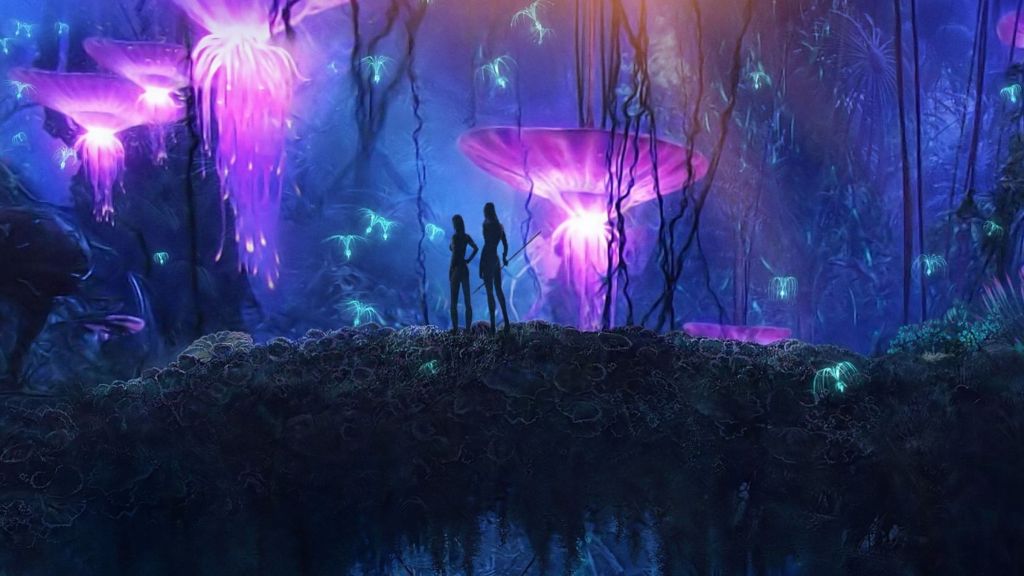
A record-breaking movie even years later, Avatar remains one of the most original and, above all, visually impressive sci-fi films. The story follows Jake Sully (Sam Worthington), a former Marine who infiltrates the Na’vi and ends up defending their culture against human invaders. It was a massive hit, but much of the conversation around it wasn’t about the story — it was about world-building. Pandora is over-the-top, yes, but in a way that works: bioluminescent forests, creatures that feel real, and massive environments you actually want to explore. James Cameron built an entire world to impress, and it’s not just about beauty; here, it’s about immersion, because you really feel like you’re there.
Cameron is well-known not just for his blockbuster films but also for the way he meticulously plans every detail to make audiences experience his worlds fully. The entire universe is visually and narratively consistent, which makes Avatar even more engaging (and he didn’t skimp on the sequel, with the third film expected to go even further). This is a case of imaginative, consistent beauty, though it leans more toward fantasy. Is that bad? Not at all. But if we’re talking about a visually stunning film, it loses some points for relying heavily on digital spectacle, while other films can impress just as much, even in more minimalistic or contained scenes.
3) Dune: Part Two

If there’s one thing Denis Villeneuve is a master at, it’s visuals, and in Dune: Part Two, he goes all out. The first film in the saga already nailed it, but the sequel seems determined to surpass itself, turning into a true photography epic. The story continues with Paul Atreides (Timothée Chalamet) trying to claim his destiny, now facing the Harkonnens and leading the Fremen. Here, the planet Arrakis is treated almost like a character: endless dunes, massive sandstorms, and a place that literally breathes danger and grandeur. Villeneuve’s signature visual minimalism is there, but the film doesn’t rely on it to the point of exhausting the viewer. Everything is carefully designed so that every frame feels crafted to impress and mesmerize — a true work of art that’s been widely praised (and awarded) for it.
Dune: Part Two delivers absolute visual cohesion, with architecture, costumes, and a color palette constantly reinforcing the saga’s imposing and mystical atmosphere. It’s definitely an epic when it comes to visuals, majestic in how it combines scale, composition, and elegance. On the other hand, it’s still more restrained compared to the top two films on this list.
2) 2001: A Space Odyssey
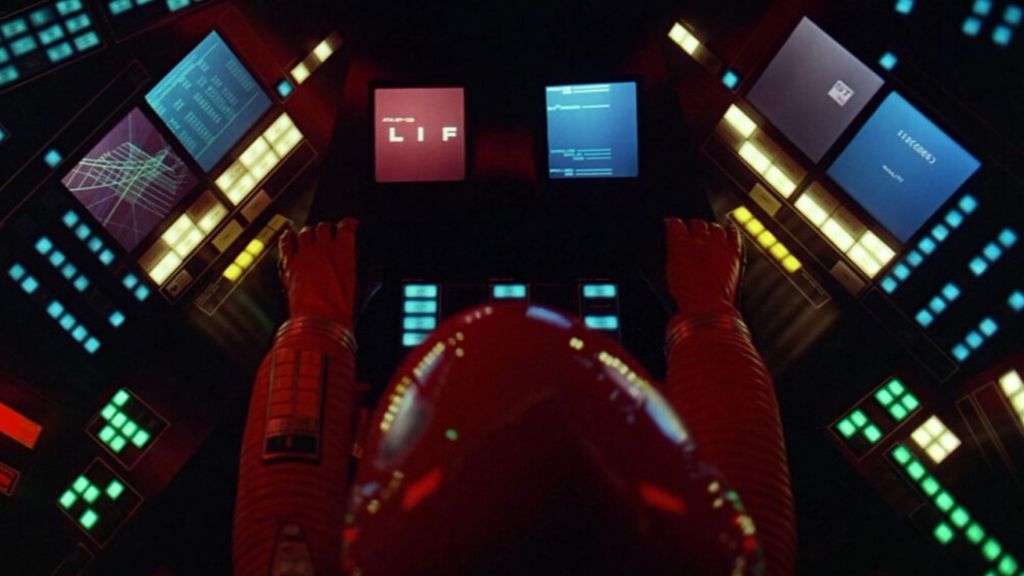
This is one of the most confusing movies in the sci-fi genre, one that you probably need to watch more than once to fully understand. But we’re talking about a film directed by Stanley Kubrick, a filmmaker known for his perfectionism. 2001: A Space Odyssey is, above all, an extremely meticulous work designed to make the audience feel all kinds of sensations purely through visuals. Its plot moves from the discovery of the monolith to the psychedelic “Stargate” sequence, following a group of astronauts on a mysterious mission while the ship’s computer starts acting strangely. The film is about technology, space, and human evolution, and everything like color, symmetry, and geometry is used to communicate calm, mystery, and majesty.
In other words, 2001: A Space Odyssey isn’t just beautiful for what it set out to do — it’s almost scientific in how perfectly everything fits together. It still impresses with effects like slit-scan photography, creating images that seem impossible to reproduce even today. For many, it might be the pinnacle of visually refined sci-fi, but it’s fair to say that within the genre, there’s another movie that manages to be even more complete.
1) Blade Runner 2049
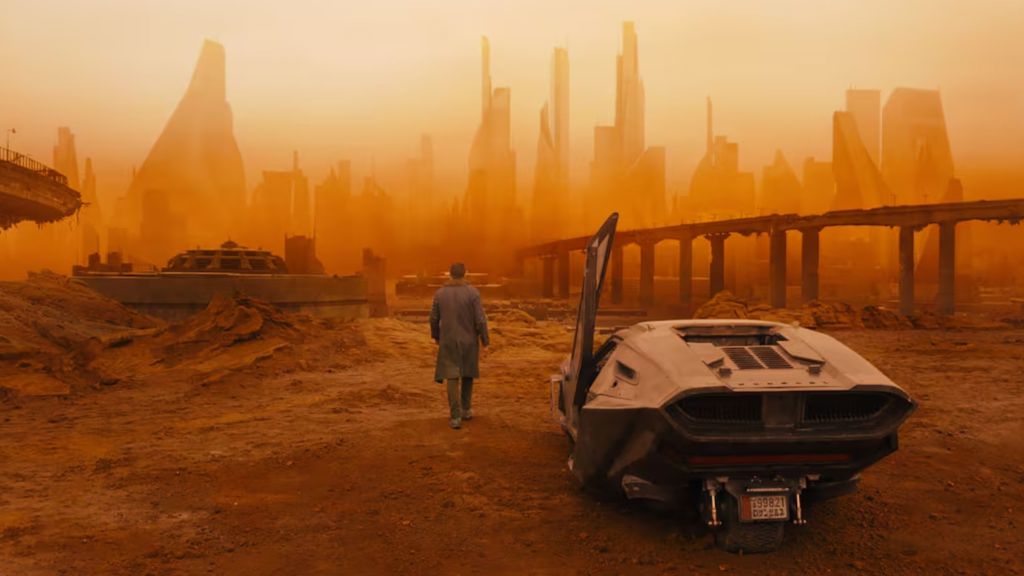
Since 1982, Blade Runner has been one of the most incredible works in the genre. Its aesthetics were already widely praised back then, but imagine taking that world and giving it a sequel directed by Denis Villeneuve? Blade Runner 2049 is the peak of visual beauty in sci-fi. The story follows K (Ryan Gosling), a replicant who uncovers secrets about humanity, and to do that, everything around him has to be fascinating. Lighting, colors, composition, production design, set design, CGI, practical effects, cinematography, brutalist architecture, neon reflections in the rain, smoke, and pollution — every single detail contributes to creating a world that is simultaneously decayed, believable, and hypnotically beautiful. In short, this is a film that impresses not just for the sheer amount of visual elements, but for how coherently they all work together.
What makes Blade Runner 2049 so stunning is that its aesthetics are always in service of the story: colors reflect emotion, sets convey isolation, and lighting defines tension. Watching it doesn’t even require much dialogue — just take a moment to absorb and interpret everything crafted to be effective together. It tops the ranking because it flawlessly combines narrative and visuals, creating a complete experience that no other film manages to surpass. This is, without a doubt, a masterclass in making grand, beautiful cinema.
Which one’s your favorite? Got another sci-fi movie you think looks stunning? Let us know in the comments!

